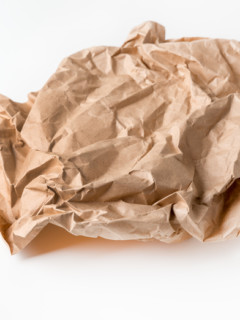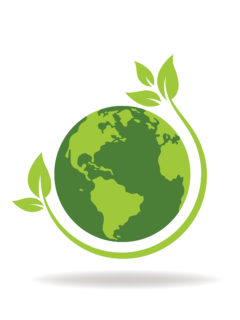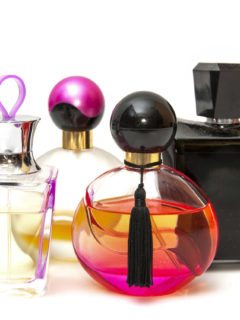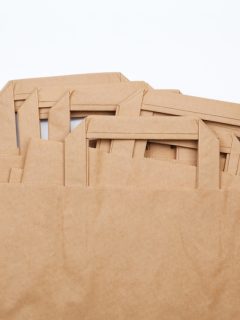I am sure you have already asked yourself what the packaging of the future will look like. So how will it manage to adapt to consumer expectations, to current and future legislation and, above all, to the necessary environmental considerations that revolve around our societies?
In order to be projected into this future, we interviewed Fabrice Peltier, designer and eco-design consultant, having launched his new book: The Packaging Revoution – First period: The Emergence of New Solutions.
According to the author, he talks about the path that led him to develop his eco-design methodologies and his vision of the packaging of the future.
Regarding his first relationship with packaging, Fabrice addresses his first steps, explaining that it all started in his childhood. “Over 50 years ago, I was a child living in the countryside, between Lozère and Ardèche. In these small French villages, the destination of rubbish was clear: it often ended up abandoned in the middle of the street, on the way out of town.” When he was only ten years old, his brothers and he founded an association aimed at nature conservation. At weekends, they emptied the rubbish: it was there that he had his first contact with packaging. At the time, he was not yet fully aware of the environmental impact: it was just rubbish, and he was thinking more about how not to get hurt, for example with the rusty cans and the shards of glass.
In this way he was confronted with an education and a way of life close to nature, and was made aware of environmental protection. This was therefore a sensitivity and a lifestyle that developed very early in his life.
Was it this childhood that led him to packaging design?
According to Fabrice, it wasn’t really. He won his first design competition in the 1970s: it was a competition organised by UNESCO to promote environmental protection, following the first ecological disasters. So it was this attraction to drawing that led him to study printing and graphic design at the École Estienne in Paris. Whereas he immediately became a freelance graphic designer. Moreover, it was then that he also began to see packaging from a professional point of view: one of his first clients asked him to develop packaging and other graphic materials. It was then that he realised that the packaging he identified as rubbish as a child was being created by him.
How did he switch to more eco-friendly packaging?
Especially in the early 1990s, people started talking about recycling packaging. At the same time, a political ecology was born, but he had little interest in it, because the environment was a rather humanistic value for him. As soon as Eco-Packaging was created, he took an interest in recycling and became a great disseminator of it. He also tried to quickly spread the message that packaging designers are responsible for the environmental impact of their designs and that if they did nothing they would be blamed. Alongside his work as a designer, he writes articles, notably for Emballage Magazine, but also books. About ten years ago, he put into practice an idea he had had for a long time: he became a packaging consultant. He realised that, as a designer, everything he was promoting in terms of eco-design was not being taken seriously by his clients. To help companies do better, he had to take on a ‘consultant’ role, rather than a ‘creative’ role. Most of all, these days, he teaches his clients his eco-design methodology; and at the same time takes care of waste management in his village of Combloux. He is currently very involved in the world of packaging and truly hopes to contribute to making packaging less and less polluting for the environment.
How do you explain the massive return of paper and cardboard packaging in today’s commercial use?
According to Fabrice, “it is not so much that companies are focusing on these types of packaging on a large scale. In fact, they are moving away from plastic in particular. The awareness that plastic is harmful to the environment comes mainly from the focus on marine plastics, which are invading our seas. Thus, this notion addresses two very important issues for humans: how plastic affects animals and how it harms human health. The reduction and, consequently, elimination of plastic, reinforced by new legislation, is causing companies to switch to paper and cardboard to minimise plastic consumption. However, there is still more communication around these eco-friendly packaging initiatives than actual facts.
Do you think that plastic packaging will completely disappear from business practices?
For Fabrice, today it is quite difficult, if not impossible, to dispense with the use of plastic. First of all, plastic has become indispensable in our lives and we have not yet found any alternative. For example, without plastic, during this Covid-19 pandemic, it would be quite complicated to use resources that were not made of plastic. That is: protections, respirators, among others.
To get back to packaging, one must understand that plastic is not the problem. Rather, the problem is the use of plastic and, in particular, single-use plastic. Companies still ask too much about “how to use plastic”, rather than “why to use it”. This leads them to over-protect, over-package and over-consume this type of material. In short, plastic packaging has such protective and resistant (not necessarily useful) capabilities that it ends up in nature and stays there. According to the author, plastic will not disappear, but its use needs to be totally rethought. That is: manufacturers should ask themselves what is the real need for protection of their products. For example, are envelopes with bubble wrap really necessary? On the other hand, consumers must also ask themselves whether they really need this plastic packaging. Today, this question is only asked at the moment of throwing away the packaging, but it should be asked at the moment of purchase. In conclusion: it is therefore up to manufacturers, as well as consumers, to ask these questions.
What do you think are the most promising packaging trends for the future?
In the book “The Packaging Revolution”, Fabrice states that this revolution is bringing about several interesting trends. For example, we are seeing the development of renewable materials (e.g. plastics made from cellulose) and recycled materials. The days of non-recyclable packaging are numbered and it will be impossible to create packaging that cannot be recycled. But that is not the basis of this revolution in itself. The trends that will really revolutionise packaging are those that do away with the notion of single use. So that the goal must be to completely reinvent packaging around the notion of multiple use, of reuse. However, on the other hand, this reuse trend addresses the problems of new distribution methods. Disposable packaging used to make sense for sales in hypermarkets, essentially, where the consumer goes to the product. Now it is increasingly the product that goes to the consumer. This is why we are faced with the emergence of levers which are in line with this revolution: the development of materials of renewable origin or recycled materials. In short, the most promising trends are not the packaging itself, but the new forms of packaging, in reusable packaging.
What do you see as the main thrust of the next period of the packaging revolution?
In the current year, the second part of your book will be released: it will be subtitled Experimenting with New Models. So the second period of this revolution will be to experiment with some of the solutions that are covered in the first book, to see which ones need to be developed on a large scale. Experimenting with reuse models, new packaging models, new distribution systems, among others. Whereas this requires time. According to Fabrice, we will no doubt see new packaging solutionsemerge, but that we are now at a point where we need to test and see the results of these solutions to choose what really works.
If you had to describe the packaging of the future in a few words, how would you describe it?
The packaging of the future is characterised as:
– Recyclable;
–Recycled (i.e. made from recycled materials);
– Lightweight
– Having the same functionality as today’s packaging.
However, Fabrice would like to go further: the packaging of the future is simply “the right packaging”: the right material, the right quantity… Today, we live in an age of “excess”: excess functionality, excess packaging, excess consumption and so on.
What advice would you give to a company that wants to think about the future of its packaging?
Firstly, the author stresses that it is fundamental to stop making isolated decisions. It is necessary to get all the company’s departments around the same table and work together on a solid methodology. But, above all, it is necessary to do our reflection with true conviction. Because if we assume that eco-responsible packaging is a competitive advantage, that it is an imposition on the consumer, or that the law requires of us… we necessarily start from a deficiency. According to the author, “we have to move forward with a real commitment, which allows the right decisions to be made.”
To the question, why he chose the CEO of the RAJA Group to write the foreword to his book, Fabrice says he had already planned the launch of his book with two forewords. Namely: those of Brice Lalonde (former Minister of the Environment of France) and Brune Poirson (former Secretary of State for Ecological Transition of France). He then met Danièle Kapel-Marcovici, CEO of the RAJA Group, to present her with the book and discuss the subject. One thing led to another and they realised that their visions of packaging and its future had a lot in common, and that they were already doing this. So Danièle asked her to create a special “RAJA” edition of the book, with a preface based on RAJA’ s 5 R’ s.
In short, RAJA produced this edition, with an introduction by Danièle, to explain why the company has been joining the packaging revolution. Above all, RAJA has already been involved in its revolution for several years and is convinced that this revolution is indispensable and that it will be a major driver. In the end, two similar fates come together.














